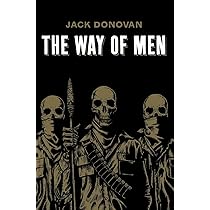Chapter 13 — Some American Husbands
byChapter 13 — Some American Husbands begins with a sharp-eyed look at how the identity and responsibilities of husbands in the United States have shifted across generations. Once regarded as the dominant figure—the leader, the provider, the protector—the American husband is now portrayed as an almost domesticated figure, more cooperative than commanding. This transformation didn’t occur overnight but has evolved through societal expectations, economic shifts, and changes in how marriage is perceived. In the past, the husband held a central and visible role in the household’s rhythm. Today, he often functions behind the scenes, more like a reliable machine than a celebrated figure. Humor weaves through the narrative, yet underneath lies an honest reflection of changing roles and their emotional toll.
The image of a once bold, free man becoming a subdued partner after marriage is drawn vividly, echoing the tale of Samson brought down by Delilah. Here, though, the modern Samson isn’t conquered by betrayal, but by a slow and steady wave of domestic expectations. Many husbands are praised before marriage as adventurous or carefree, only to be rebranded as obedient, budget-conscious partners soon after. The depiction is satirical, yet it resonates with men who feel their spontaneity has been exchanged for steady reliability. The wife is not villainized but portrayed as a skillful manager of domestic order, with the husband in tow, often unaware of how the balance shifted. The chapter doesn’t call this trend unjust—just unexpected. That irony is what gives it its strength.
Marriage is framed as a marketplace, where men are expected to pay high for comforts they may not always receive. Once married, the American husband finds himself pledging a steady income, emotional support, and household presence—all without bargaining power. The wife’s financial contribution, in contrast, is often portrayed as secondary, though her influence over spending and social direction remains central. It’s not about money alone, but control—of lifestyle, appearances, and daily choices. Husbands are presented as funders, but not planners. Their autonomy fades in a sea of scheduled dinners, shopping sprees, and social outings that they rarely initiate. The result is a domestic model where love still exists, but negotiation does not.
Rooms in the home reflect this imbalance. The parlor is decorated by the wife. The bedroom, arranged by her taste. Even the kitchen, though used by her staff or herself, still bears her decisions in tiles and color. The husband’s domain? A modest study or a shared den—often his only claim of space in the home he funds. He may be the economic backbone, yet he walks quietly through halls designed for guests to admire his wife’s sense of style. The message is subtle but firm: presence does not equal power. This physical marginalization in the home underscores his silent surrender of status.
Despite these sacrifices, the American husband is portrayed not with bitterness, but with a resigned dignity. Social events show him as the amiable partner, present but peripheral, polite and generous while others speak over him. His generosity is often unnoticed; his patience, unthanked. Stories told in this chapter include men who imagined peaceful companionship but instead became chauffeurs for their wives’ ambitions. Their lives are shared, but not steered. And yet, they carry on—earning, supporting, and adjusting, as if their endurance was simply part of the contract.
The comparison with other cultures strengthens the chapter’s humor and critique. In places where men still assert authority or occupy prominent domestic roles, the American counterpart seems curiously tame. In those homes, a husband’s voice is central; in American homes, it’s often quieted beneath layers of politeness or humor. This cultural shift is not condemned but observed with a touch of irony and empathy. The contrast highlights what’s been gained—perhaps more balance, maybe even emotional maturity—but also what’s been lost: a sense of personal domain. The American husband becomes both a symbol of adaptation and a quiet casualty of evolving gender dynamics.
The narrative never argues against equality or the empowerment of women—it acknowledges these as progress. What it does question, however, is whether husbands were prepared for the trade. Were they told that their authority would be traded for compliance? That their role would shift from commanding to convenient? As gender roles redefined themselves, it appears many husbands were simply expected to adjust without conversation. And adjust they did. Some with good humor, others with fatigue. But always with a certain grace that goes mostly unnoticed.
In the end, the chapter honors American husbands not for holding on to power, but for letting it go with civility. Their sacrifices are rarely celebrated, and their frustrations often dismissed. Yet they persist—in work, in loyalty, in partnership. If strength is measured by resilience, then these men are giants in quiet clothes. Beneath the satire, this is the story of endurance: of men who learned to serve, support, and love in a world that stopped asking what they wanted, and started expecting them to just give.

